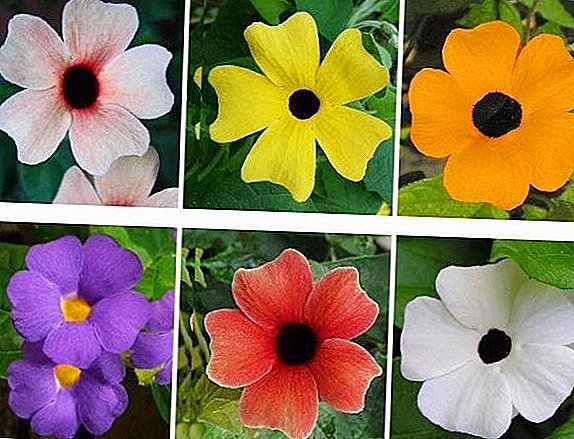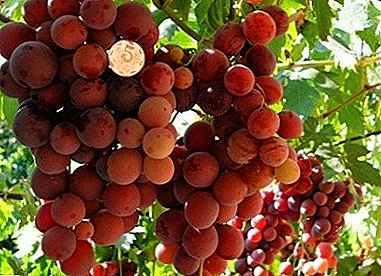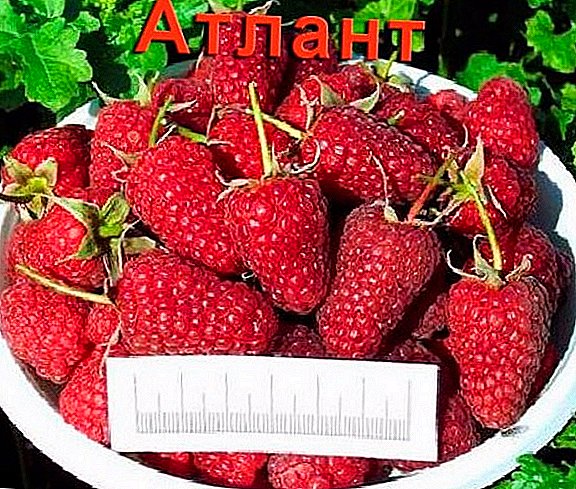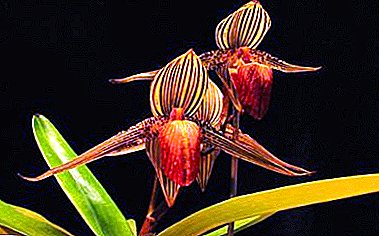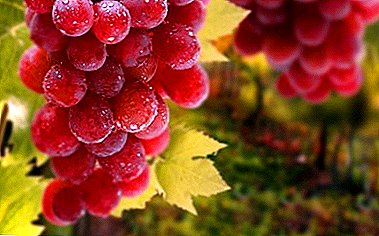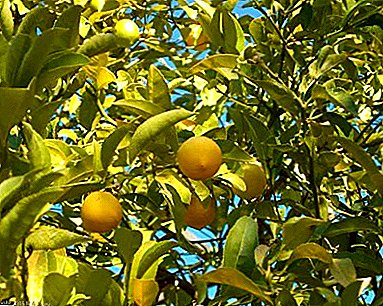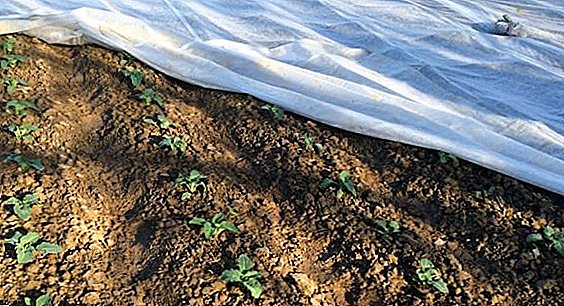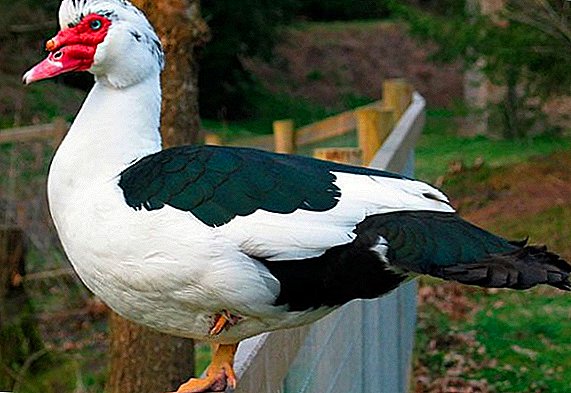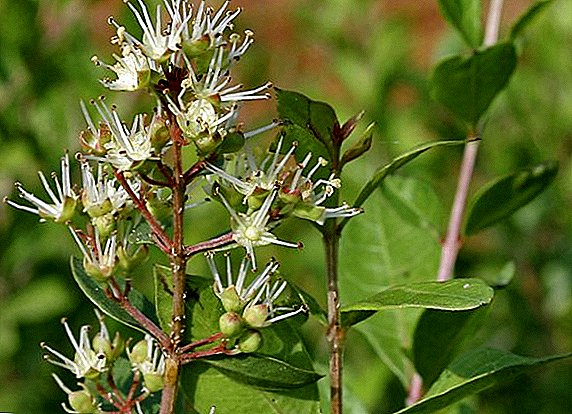 Lawsonia nekolyuchaya (in Latin the name of this shrub is written as Lawsonia inermis) - a plant that people have known and used for more than a thousand years. It is from the leaves of Lawsonia that henna, famous for the whole world, is made, with which women emphasize the beauty of their hair. Let's look at what wonderful medicinal and cosmetological properties Lawsonia has and how to grow it at home.
Lawsonia nekolyuchaya (in Latin the name of this shrub is written as Lawsonia inermis) - a plant that people have known and used for more than a thousand years. It is from the leaves of Lawsonia that henna, famous for the whole world, is made, with which women emphasize the beauty of their hair. Let's look at what wonderful medicinal and cosmetological properties Lawsonia has and how to grow it at home.
History reference
For the first time henna was mentioned in written sources more than two thousand years ago. A plant with unusual properties was known both in ancient Egypt and in India, Pakistan, Iran, and the Far East. Not only women used the coloring properties of henna to adorn their skin, hair or nails, but in some warlike tribes warriors drew henna patterns that emphasized their tribal status.  In ancient Egypt, henna was used by pharaohs during life and after death, ritual drawings were necessarily applied to the body of the deceased ruler. In medieval India, which at that time was under the yoke of Muslim rulers, complex patterns of henna decorated the face and hands of married women, which served as a clear distinction from virgins, often kidnapped by slave traders.
In ancient Egypt, henna was used by pharaohs during life and after death, ritual drawings were necessarily applied to the body of the deceased ruler. In medieval India, which at that time was under the yoke of Muslim rulers, complex patterns of henna decorated the face and hands of married women, which served as a clear distinction from virgins, often kidnapped by slave traders.
Did you know? In India to this day, henna decorates the hands, legs and face of the bride during a wedding ceremony. It is a form of prayer, invoking the blessings of the gods, fertility in marriage, and material well-being for a young couple. In Morocco, immediately after the birth of a child, henna paste is applied to the navel, this is done in order to provide the newborn with bodily beauty and wealth in adult life.
Botanical description
The plant is evergreen, in the form of a bush with small narrow elliptical leaves. The height of the shrub varies depending on the climate from 3 to 6 meters. The plant blooms in small flowers, gathered in large paniculate inflorescences. Petals can be painted in tones from white with a pink tinge to bright red. The plant has a pleasant, quite noticeable aroma. After the henna is fading and the petals are peeling off, small fruits in the shape of a ball with seeds are formed in their place.
Evergreens are an excellent decoration of the dacha. Even in winter, green spruce, honeysuckle, cypress, boxwood, pine, yew will delight the gardener's eye.

Spread
Until now, the exact origin of Lawsonia nekolichy is unknown. The most likely version is from Iran. The plant prefers a tropical and hot climate. The shrub is often found in barren regions of northern and eastern Africa, as well as in tropical climates: on the island of Madagascar, in southern regions of Asia, Sri Lanka, Australia and southern America. Plants are often used as hedges.
Did you know? Mention of the healing properties of henna is often found in the medical treatises of the great physician of antiquity, Avicenna, as well as in the holy texts of the Quran and the Bible. The Quran says that the Prophet Mohammed dyed henna beard, like other men of the time, and also loved to enjoy the fragrance of flowers of this plant.
Chemical composition of lawson
 In addition to a significant amount of tannins, the leaves of Lawsonia are necropolis containing a substance called Lawson, which is chemically 2-hydroxy-1-4-naphthoquinone. It is he who gives the plant properties for coloring (in the East, this substance is called henna or henna). The chemical composition of lawsonium is not stupid. It also contains mannitol, acids (gallic, ellagic and organic), triterpenoids, phenolic glycosides, tannins, resins, vitamins C and K. .
In addition to a significant amount of tannins, the leaves of Lawsonia are necropolis containing a substance called Lawson, which is chemically 2-hydroxy-1-4-naphthoquinone. It is he who gives the plant properties for coloring (in the East, this substance is called henna or henna). The chemical composition of lawsonium is not stupid. It also contains mannitol, acids (gallic, ellagic and organic), triterpenoids, phenolic glycosides, tannins, resins, vitamins C and K. .
Pharmacological properties
Lausonia (its roots, leaves, bark and seeds) is still used as a medicine.
The healing properties of Lawsonia are not pious (Lawsonia inermis):
- antifungal;
- antimicrobial;
- antibacterial;
- wound healing;
- hemostatic;
- anti-inflammatory;
- pain medication;
- antipyretic;
- stops migraine.
Did you know? Arabic painting is called mehendi. For her, traditionally, paint obtained from leaves growing on the leaf of the bush of lawsonia is used. It is in these leaves there is a large number of dyes. The drawings in this technique, made by an experienced master, are held on the skin (not paler) for three weeks.

Application of lawson
The healing properties of this plant have long been known. The substance is still used not only in medicine, but also in cosmetology. Medicines, perfumes, dyes for hair, skin and fabrics are made from it.
In medicine
Long-established Lavsonia has long served as an inexhaustible source for the production of substances with a medicinal effect. Dry powdered henna and vegetable curative oil were made from it. Arab doctors have noticed that the root, leaves, bark or seeds can heal completely different diseases. What diseases were treated with henna:
- leprosy, chicken pox and measles;
- diarrhea, jaundice, other liver diseases;
- venereal diseases;
- malaria, viral respiratory diseases;
- violation of the skin (burns, frostbite and abrasions);
- psoriasis, eczema, headache, impotence.
Symptoms of a headache will help to remove a linden, a clover, a willow, a periwinkle, a carnation, the Indian onions.
Pounded into powder, henna root was combined with indigo and resulted in an effective cure for miscarriage.
Drawings on the skin, made with henna, were not only beautiful, but also kept the health of their masters. Henna has excellent bactericidal properties that neutralize cutaneous bacteria.  In ancient times, for dyeing hair, henna was mixed with resin and oil, and as a result, a paste was obtained that strengthened and nourished the hair. After the dyeing procedure, dandruff disappeared, that is, not only thin, brittle hair was healed, but also the scalp returned to normal.
In ancient times, for dyeing hair, henna was mixed with resin and oil, and as a result, a paste was obtained that strengthened and nourished the hair. After the dyeing procedure, dandruff disappeared, that is, not only thin, brittle hair was healed, but also the scalp returned to normal.
To combat dandruff, use a mask of onions.
It is also important to add that Henna protects hair and skin from ultraviolet radiation. It also improves the hair structure and smoothes the hair scales, giving them smoothness and shine.
In modern medicine, henna is still actively used. In countries of South Asia and Africa, it is used as an antiseptic for the treatment of skin diseases, especially mycoses. Possessing astringent properties, it effectively prevents sweating of feet and hands, and also treats any cracks, horny epidermis and frostbite.
On the basis of henna, olive oil and powdered sulfur prepare an ointment for dandruff.
Burn ointment, which is made from henna and coriander juice, is also very effective. To protect the respiratory tract from viral infections, henna, mixed with oil and honey, is taken orally.
In cosmetology
 Henna has a wide range of applications in the beauty industry. It is used to make cosmetics for the care and coloring of hair and skin. Services for the use of henna procedures are available at every beauty salon.
Henna has a wide range of applications in the beauty industry. It is used to make cosmetics for the care and coloring of hair and skin. Services for the use of henna procedures are available at every beauty salon.
Also on the basis of turmeric make funds for hair coloring.
The most famous are the coloring properties of henna. In Muslim countries, baths (hammam) are offered baths with henna, after which the body becomes light brown in color, looks healthy and radiant. Besides, Henna softens the skin, making it velvety, pleasant to the touch. Henna powder can be bought at any pharmacy for a small amount and using it to dye and heal hair.
Important! Henna dyes hair in different shades of red (from bright red to dark chestnut). The color obtained at the end of the dyeing procedure depends on the main hair color to which henna has been added. You can mix henna and basma in different parts to get a darker and more expressive hair color.
To dye your hair
Henna powder (1 bag) is poured into a ceramic or glass bowl. Hot (freshly boiled) water is added to the powder until the mass reaches the consistency of thin sour cream. Then it is applied to the hair, wrapped in polyethylene and a kerchief, and not washed for 6-8 hours. You can carry out staining in the evening and go to bed. In the morning (or just after the procedure) the head is washed with warm water and shampoo. For short hair, take 1 pack of henna for one coloring. For long hair, you must use 2-3 packs of dye in one procedure.
Henna has a beneficial effect on the hair, so there is no danger of damage, even if you use this natural dye for many years.  This tool is also great for nourishing and coloring eyelashes and eyebrows. As a result of such cosmetic procedures, in addition to dark eyelashes and eyebrows, you can additionally receive treatment for the skin and delicate, fine hairs. Eyebrows and eyelashes for two to three weeks will not need additional eyeliner dark cosmetic pencils.
This tool is also great for nourishing and coloring eyelashes and eyebrows. As a result of such cosmetic procedures, in addition to dark eyelashes and eyebrows, you can additionally receive treatment for the skin and delicate, fine hairs. Eyebrows and eyelashes for two to three weeks will not need additional eyeliner dark cosmetic pencils.
In eastern countries, henna is used for coloring nail plates, as well as skin.
Did you know? Because of its high tannin content, henna was widely used in ancient times for dyeing leather and textiles. In the funeral ritual of the ancient Egyptians, the mummies of the departed were wrapped in henna-colored fabric. Arabs used henna to paint horse hooves, tails and manes.Lonsonia flowers are nekolyuchi used to produce essential oil. This essential substance is called "Cypriot oil", it is used to create new fragrances in perfumes (perfumes, eau de toilette, colognes) and as a natural fragrance for lipstick.
Cultivation
Lawsonia nekolyuchaya grows well in a flowerbed (in tropical areas), and in the pot conditions in homes, apartments and offices. The plant is quite unpretentious: a little water, a lot of light, gentle pruning, timely help from the owners in the fight against disease - and many years of shrubs will feel great. 
Features planting seeds
Lawsonia can be propagated without difficulty, by rooting green cuttings or sowing seeds.
Seed propagation
A shallow container (a flower pot, a seedling box) is taken in which to pour the soil. The soil poured into the tank is leveled, slightly moistened with a spray bottle, and dry seeds of lawson are randomly sprinkled on it. It is necessary to try and distribute the seeds on the surface of the soil is not heap.
Important! Sown seeds are left lying on the ground not covered with earth, or they are covered with soil to a depth not exceeding 1-2 mm. The reason for this is a very small caliber of seeds, being deep in the soil, they simply will not grow, they do not have enough growth energy.
The crops are once again sprayed with a spray bottle and covered with plastic wrap or a small, transparent glass. The container with seeded lawsonia is placed in a warm place, occasionally airing and moisturizing with fine watering. The first shoots should be expected within 30-35 days after sowing.  This process can be accelerated by sowing seeds prepared in advance. To prepare, you need to carry out such a procedure: the seeds are laid out on a damp wool fabric, after which the fabric is rolled into a roll and placed in a plastic bag.
This process can be accelerated by sowing seeds prepared in advance. To prepare, you need to carry out such a procedure: the seeds are laid out on a damp wool fabric, after which the fabric is rolled into a roll and placed in a plastic bag.
The package is suspended from the heating battery for a week. In heat and moisture, the seeds will swell well, they will begin to develop internal sprouts. Being sown in the ground, such planting material will rise within three days.
While the seedlings are young, the soil in the seedling tank should be kept slightly wet, occasionally sprinkling young plants with warm water. Glass or plastic bag is not removed, the breeding ground remains covered. When the second couple of true leaves appear on young women, they can be dived into individual pots for permanent residence.
Reproduction green or stiffened cuttings
Cut the stalk so that it was attended by two or one fruit buds. The segment should be at least 8-12 cm in length. To achieve the appearance of the root system on the cuttings, you can lower them into a container with water, in which rooting means are added (for example, “Kornevin”) or placed in wet sawdust, 1 centimeter deep.
Whatever rooting method is chosen, the cutting cannot be left without water or in dry sawdust. As necessary, water should be poured and moisten the sawdust with a spray bottle. After 35-40 days, white roots will begin to grow on the cuttings, when the roots reach a length of 2-3 cm - lawsonia can be planted in a separate pot, where it will grow constantly. 
Did you know? Strange, but despite the bitter taste, animals love to eat leaves and young branches of Lawsonia very much. After such a "tasteless" meal, animals walk for a couple of weeks with red or burgundy lips. After waiting for the beginning of the rainy period, even strongly eaten, bushes of Lawsonia quickly build up young branches and leaf mass.
Lighting and accommodation
Lovesonia does not love a well-lit place, he calmly reacts to constant sunlight. The most successful solution would be to install a pot with growing henna on the south window. In the summer months, the plant can be put on a balcony or in a flower bed well lit by the sun. The temperature outside or in a room where lawnonia is located must exceed + 11 ° C - this is the main condition for the normal growth of a tropical plant. The summer heat shrub perfectly tolerates.
Soil, Substrate and pH Level
The soil for planting a lawless one should be acidic (pH 8-8.5), so you need to buy it in a specialized gardening shop or collect it in a meadow where the horsetail grows abundantly. Meadow soil needs to be mixed with sand in equal shares. The presence of horsetail always indicates acidic soil.
Find out why it is important to consider soil acidity for plants; how and what to deoxidize the soil in the garden.
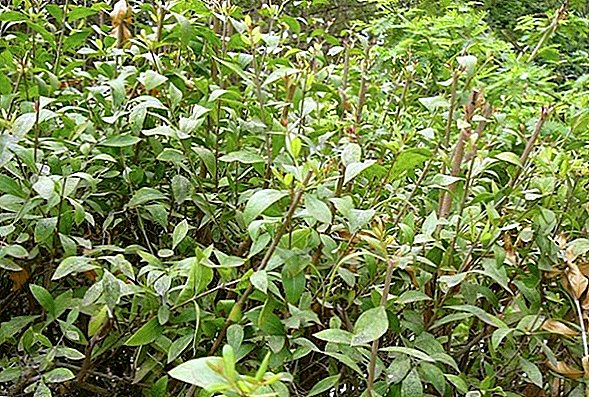
Watering
Lawsonia loves acidic soils, but absolutely does not tolerate swampy soils. In the wild, a plant can survive for a long time on a poor water ration without much damage to itself. Therefore, home-grown Lawsonia cannot be over-humidified.
You can water the bush only after the top layer of soil in the pot dries out a little. Going around for a long time without water, the plant will not die, but only shed its leaves. This is his natural reaction to extreme conditions, the same way lawion will react to an invasion of pests or disease.
Pruning
Lawsonia is not hard-working, it is a very tenacious plant, so after the leaf cover falls off - the bush is well cut, poured with water with a full range of mineral fertilizers, and put on a well-lit window sill (preferably on a southern window). The plant will quickly grow new branches and leaves
Did you know? The tradition to paint with henna the body goes back 5,000 years ago, so the famous ruler of Egypt decorated itself - Nefertiti. If natural ground coffee is added to the henna solution, then the pattern on the body will be made in chocolate tones, and if red wine is used as an additive, then in claret.

Harvesting
The leaves of young henna plants do not have a coloring and medicinal effect. The conditioned harvest of leaves and bark is first harvested after the shrubs reach three years of age. After the leaves are removed from the plant, the young shoots are cut, the length of which reaches 20-25 cm. The shoots are dried and ground to a dry powder. In industrial cultivation from one hectare of three-year plantings up to two tons of medicinal raw materials are harvested.
You can easily grow a beautiful, well-branched henna bush at home in a pot and you will be able after some time to harvest your own crop of healing leaves. Observing simple rules of cultivation, it is possible to achieve fragrant flowering and violent growth of lawsonia in a roomless environment under room conditions.


